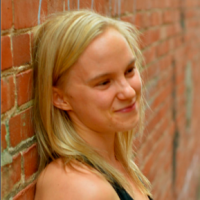Can the guru-disciple relationship be disempowering? YogaModern.com spoke with Rod Stryker about power dynamics in teacher-student relationships at the 2011 Yoga Journal Conference in Estes Park. Stay tuned for more of the interview with Rod plus many other teachers, including Tias Little, Tommy Rosen, Paige Elenson, and more.
I had the privilege of interviewing several well-known yoga teachers at the Yoga Journal Conference last week, and it was interesting for me to witness a recurrent theme emerge in many of the dialogues. Over and over again, I heard from these “celebrity yoga teachers” that one of the greatest challenges they face as the sort of torch-holders of yoga today is finding a balance between honoring tradition/lineage and allowing the practice to evolve to meet the needs of their students.
As a very novice yoga-sharer myself (I still can’t quite bring myself to identify as a teacher), I felt very humbled to listen to these teachers share their perspective on how yoga has evolved over the decades. I listened intently to the stories of time they’d spent in India, studying with their guru in the isolation of ashram life. Today, the majority of practitioners know a very different yoga. Yoga is taught in fitness gyms, elementary schools, prisons, as well posh yoga studios downtown. The word “guru” makes many of us recoil. So when Rod Stryker started talking about enlightened masters, I wanted to know exactly what that meant. How would I know an enlightened master if I met one? What qualifies a true yoga teacher anyway?
To be honest, I’ve always been a bit skeptical of the very notion of a guru to begin with. I realize that many ancient schools of wisdom — from Yoga to Buddhism to Sikhism and more — hold that the guru-shishya tradition is the best method for passing deep, powerful knowledge down to future generations. But, at the heart of this tradition is a very special type of relationship between student and teacher. It is a relationship based not only on the devotion of the disciple, but also on knowledge, experience, and purity of intentions of the teacher. It is a relationship that I don’t think very readily emerges from the social and political dynamics of American culture.
Consciously or not though, we have adopted subtle aspects of the guru-disciple tradition in the way we relate to our yoga teachers today. The word “guru” doesn’t just mean teacher; literally, a guru is one whom leads students from darkness to light. If you buy into that kind of thing, the guru is a self-realized master capable of unearthing the path to enlightenment (and I use the male pronouns with due intention). As Rod Stryker put it, these teachers are “fearless, joyful, and self-realized.” He said earlier in our interview that he’d only met two such masters in his life.
It’s worth noting, however, that the guru-disciple relationship of ancient practice was far more complex and involved than just showing up to a teacher’s public class every week. It was a deep, committed, even sacred relationship that took many years to establish. You didn’t just “hand away your power” to anyone; in India, students took more than a decade to establish trust, commitment, and rapport. The guru served many roles — yoga teacher, therapist, pseudo-parent, and spiritual confidante. That’s a lot of power to instill in one individual, and one that seems all too easy to exploit or misuse if one party is not grounded in the highest of intentions.
Nowadays, students start calling their teachers their “gurus” after days, maybe months of attending classes with them. Their feelings toward their teachers are tinged with all sorts of weird psychological dynamics; unresolved parental issues, romantic desires, the projections certainly run the gamut. I feel like Scott Mandelker summed it up well when he said that “most students actually want to remain little children and idolize their holy daddy, and holy mommy.” And, as Patience Steltzer has written about at Yoga Modern before, we’ve seen plenty of examples in modern yoga of teachers abusing power.
So I wanted to hear what Yogarupa Rod Stryker had to say about this topic. As one of the most well-recognized Western yoga teachers and one who’s been teaching for over three decades, he has… well, let’s just say he’s been around the block a few times. He’s watched Yoga evolve and transform in the United States over the past thirty years, mixing and melding with our cultural traditions. And I think he highlights an important tendency in this interview that I fall into myself sometimes: “throwing the baby out with the bathwater” with lineage/tradition just to avoid losing self-agency to a teacher who might abuse trust.
So take a listen to what the “expert,” has to say, and then I’d like to hear from you. Do you see unhealthy power dynamics arising in teacher-student relationships where you practice? Do you have a guru?
Rod Stryker is widely considered to be one of the pre-eminent yoga and meditation teachers in the United States. He is the founder of ParaYoga and has taught Tantra, Meditation, and Hatha Yoga for more than thirty years. Rod is also the author of the new book, The Four Desires: Creating a Life of Purpose, Happiness, Prosperity, and Freedom.










Read 7 comments and reply